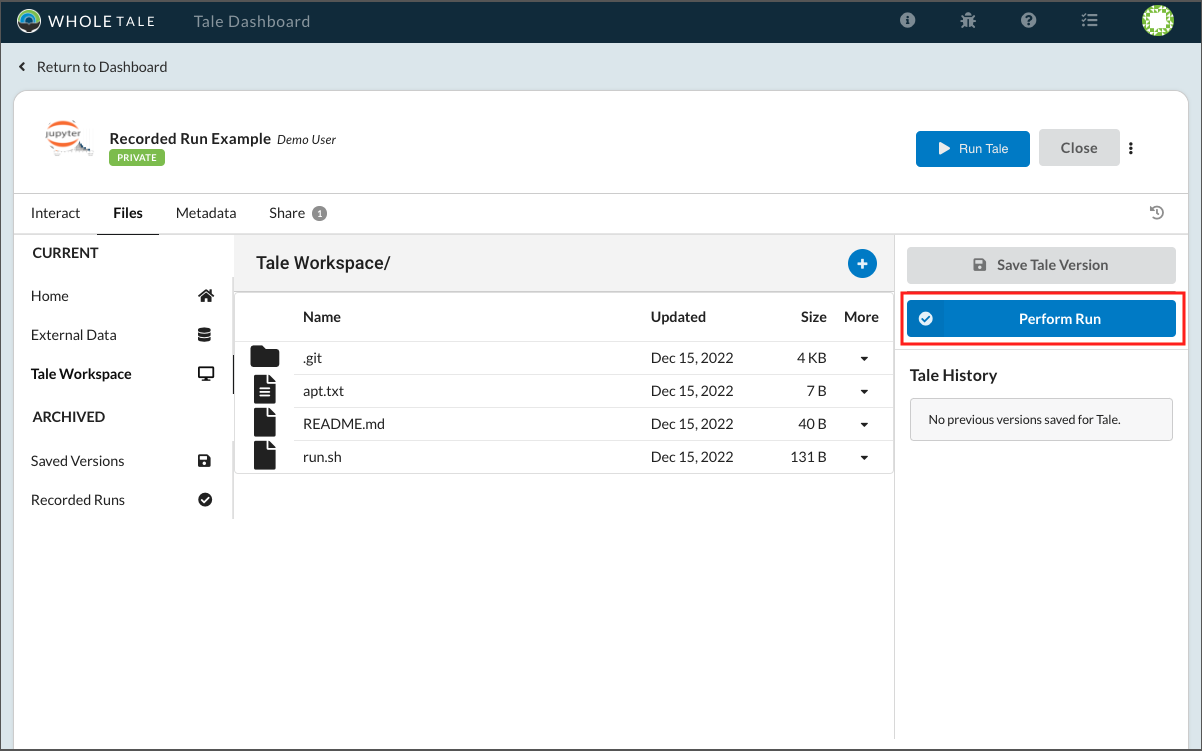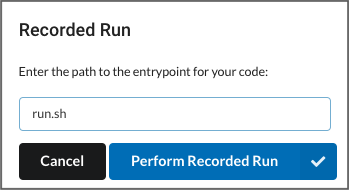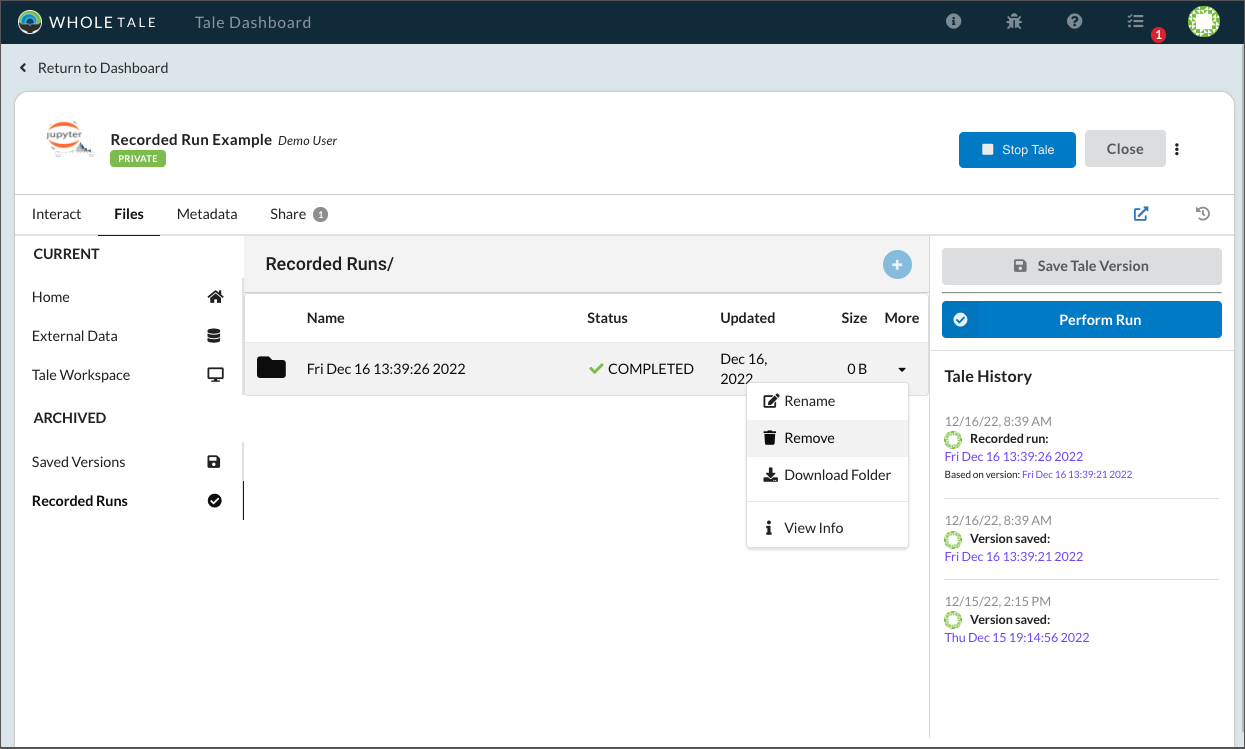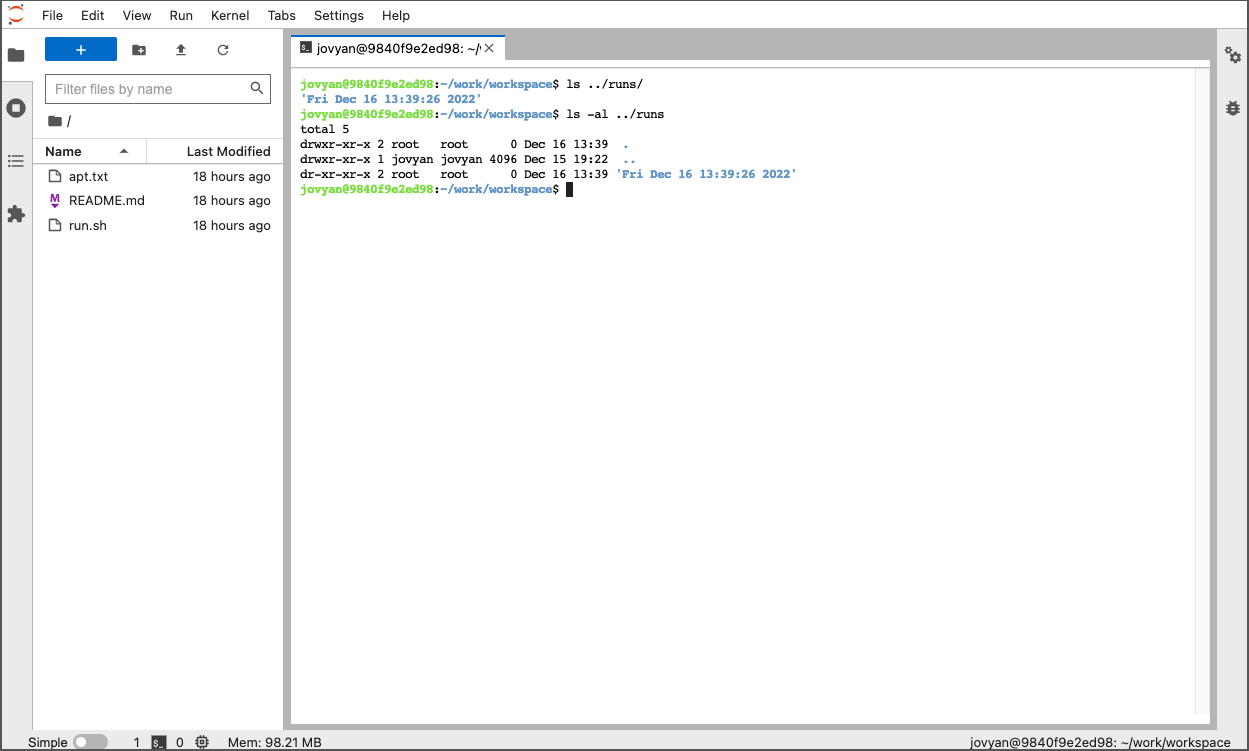Recorded Runs¶
A recorded run is a way to ensure the transparency and reproducibility of your computational workflow by capturing the exact copy of artifacts used to generate results. A recorded run:
Creates a version of your tale
Builds or uses an existing container image
Executes a specified workflow via an entrypoint or master script in an isolated container
Captures an immutable copy of all outputs
Captures system runtime information including memory and cpu usage
Can be published
Note
Recorded runs can be used to capture multiple independent workflows for a single version of a tale. A version can have more than one recorded run.
You can execute a recorded run via the Tale Action Menu or Tale History
panel. Select the Tale History icon (![]() ) to open or close the panel:
) to open or close the panel:
To start a crecorded run, select Perform Run:

Perform run button¶
This will prompt you to specify an entrypoint or master script for your workflow:

Recorded run dialog¶
Created runs are accessible from the Whole Tale dashboard or from inside your running interactive environment in the ../runs directory:

Recorded run in the dashboard¶

Recorded run in the interactive environment¶
Deleting Runs¶
Runs can only be removed if the associated version is first removed. Deleted runs are removed permanently and cannot be recovered.
Renaming Runs¶
Runs can be renamed via the dashboard and are renamed on the filesystem.
Exporting and Publishing Runs¶
Recorded runs are exported and published based on the associated version. This means that an exported or published tale will have a single version, but may have more than one recorded run.